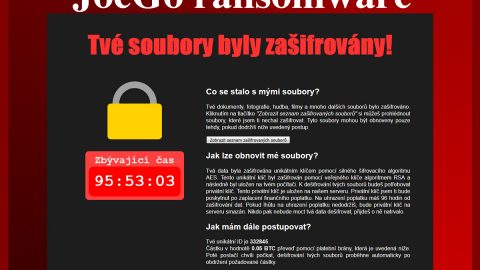What is WebHelper? And how does it function?
WebHelper is categorized as an ad-supported program or adware that could enter your system silently using the utorrentie.exe and webhelper.dll processes. So if you are using uTorrent in downloading files like programs or movies, etc. WebHelper can open and play advertisements on the desktop of your computer which is definitely annoying.
What’s worse about this adware is that deleting the files associated to it won’t help you get rid of it since the file relies on browser helper objects which reinstall it along with your uTorrent program. That’s why you have to follow the removal instructions provided below but before you do, read more about what this adware is capable of.
WebHelper does not only bombard you with tons of ads but it is also capable of tracking your browsing activities to gather non-personally identifiable information like IP address, browsing history, search queries, websites visited frequently, and so on. The information it has collected will be processed and used to generate more ads that are related to your interests to increase the chances of you clicking them which would contribute to the revenue of WebHelper’s developers. In addition, this adware is also capable of playing audio ads which would mostly confuse you as it’s hard to know which program or process does it. The source of the sound can be traced by opening the Windows Audio Mixer program so if this happens to you, you know what to do but know that this is only a temporary fix as WebHelper can open other audio ads. To avoid such annoyance, you must remove this adware program from your PC ASAP.
Moreover, you should also know that the utorrentie.exe process silently uses your CPU power to communicate with its affiliated sites and load their ads onto your computer. This kind of activity could result to regular system slowdowns – in short, it would greatly affect your computer’s overall performance.
How is WebHelper distributed online?
WebHelper is part of uTorrent, so if you install uTorrent, you also unknowingly install this adware program. If you don’t want the annoyance that this adware brings, you must remove uTorrent from your PC as well. Adware programs like this one are usually distributed through software bundles offered on free sharing sites. When you install a free software package, use the Advanced or Custom installation setup rather than the standard one to avoid installing this kind of program again.
Follow the removal guide below to delete WebHelper from your system.
Step1. Close all the browsers infected with the ad-injecting program. If you’re having a hard time closing them, you can close them using the Task Manager just tap on Ctrl + Shift + Esc.
Step2. After you open the Task Manager, go to the Processes tab and look for the infected browser’s process and end it.
Step3. Reset all your browsers to default to their default state.
Google Chrome
- Launch Google Chrome, press Alt + F, move to More tools, and click Extensions.
- Look for WebHelper or any other unwanted add-ons, click the Recycle Bin button, and choose Remove.
- Restart Google Chrome, then tap Alt + F, and select Settings.
- Navigate to the On Startup section at the bottom.
- Select “Open a specific page or set of pages”.
- Click the More actions button next to the hijacker and click Remove.
Mozilla Firefox
- Open the browser and tap Ctrl + Shift + A to access the Add-ons Manager.
- In the Extensions menu Remove the unwanted extension.
- Restart the browser and tap keys Alt + T.
- Select Options and then move to the General menu.
- Overwrite the URL in the Home Page section and then restart the browser.
Internet Explorer
- Launch Internet Explorer.
- Tap Alt + T and select Internet options.
- Click the General tab and then overwrite the URL under the homepage section.
- Click OK to save the changes.
Step4. Open Control Panel by pressing the Windows key + R, then type in appwiz.cpl and then click OK or press Enter.

Step5. Look for WebHelper and any suspicious program that is affiliated with it and then Uninstall it.

Step6. Hold down Windows + E keys simultaneously to open File Explorer.
Step7. Navigate to the following directories and look for suspicious files associated with WebHelper and delete it/them.
- %USERPROFILE%\Downloads
- %USERPROFILE%\Desktop
- %TEMP%
Step8. Close the File Explorer.
Step9. Empty your Recycle Bin.
To make sure that nothing is amiss and that WebHelper is completely removed from your computer, follow the advanced steps below.
Perform a full system scan using SpyRemover Pro. To do so, follow these steps:
- Turn on your computer. If it’s already on, you have to reboot
- After that, the BIOS screen will be displayed, but if Windows pops up instead, reboot your computer and try again. Once you’re on the BIOS screen, repeat pressing F8, by doing so the Advanced Option shows up.
- To navigate the Advanced Option use the arrow keys and select Safe Mode with Networking then hit
- Windows will now load the SafeMode with Networking.
- Press and hold both R key and Windows key.
- If done correctly, the Windows Run Box will show up.
- Type in explorer http://www.fixmypcfree.com/install/spyremoverpro
A single space must be in between explorer and http. Click OK.
- A dialog box will be displayed by Internet Explorer. Click Run to begin downloading the program. The installation will start automatically once a download is done.
- Click OK to launch it.
- Run SpyRemover Pro and perform a full system scan.
- After all the infections are identified, click REMOVE ALL.
- Register the program to protect your computer from future threats.

















